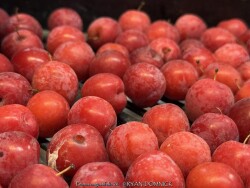
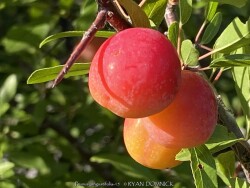
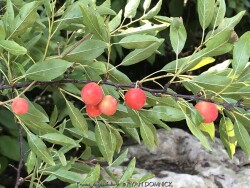
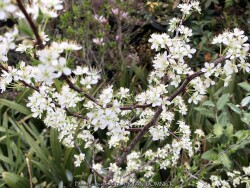
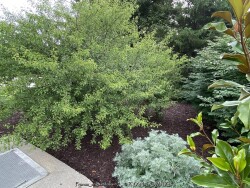
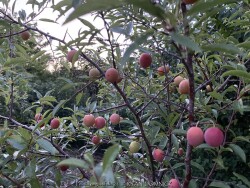
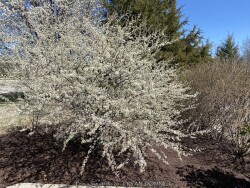
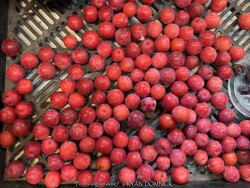
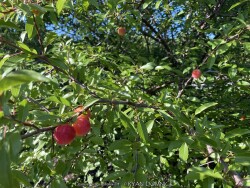
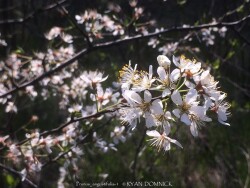
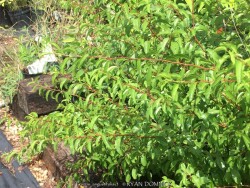
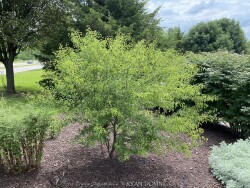
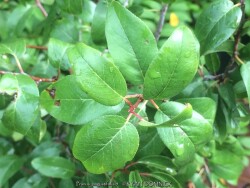
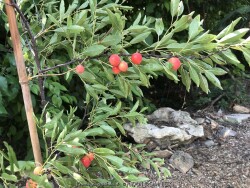
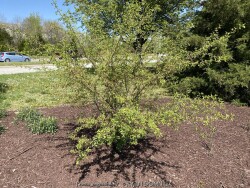


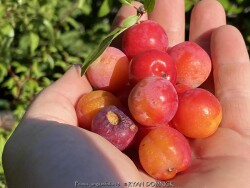
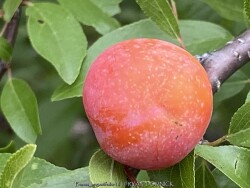
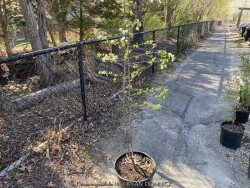
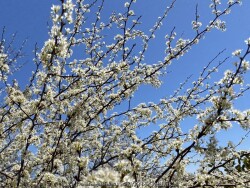
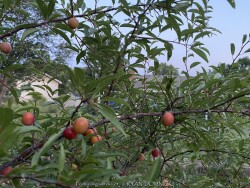
Plant Min Zone: 5a
Plant Max Zone: 9a
Sunlight: All Day Full Sun, Full Sun, Part Sun
Water / Rainfall: Very Low, Low, Average
Soil Quality: Poor, Average
Bloom Season: Spring
Flower Color: White
Berry / Fruit Color: Orange, Orangish Red
Spring Foliage Color: Green
Summer Foliage Color: Green
Fall Foliage Color: Yellow
Evergreen Foliage: No
Winter Interest: No
Scented Flowers: No
Drought Tolerance: High
Wet-Feet Tolerance: Medium
Humidity Tolerance: Low, Medium
Wind Tolerance: High
Poor Soil Tolerance: Rocky Soils, Sandy Soils, Shallow Soils, Clay Soils
Height: 4' - 8'
Width: 4' - 8'
Growth Rate: Slow, Medium
Service Life: Very Long: 10-20 years
Maintenance Need: Low
Spreading Potential: Medium
Yearly Trimming Tips: Prune Shrub Sparingly: Berry / Fruit Production Will be Reduced or Eliminated with Pruning: Blooms on Old Wood.
Plant Grouping Size: Small Grouping of 3-5, Medium Grouping of 5-10
Best Side of House: South Exposure, West Exposure, East Exposure
Extreme Planting Locations: Survives Severe Drought, Tolerates Extreme Heat, Top of Retaining Wall Locations, Resistant to Rabbits
Ornamental Features: Easy to Eat Edibles
Special Landscape Uses: Erosion Control, Hedge Row, Naturalizing
Possible Pest Problems: Rabbits, Foliage Disease, Stem/Crown Disease, Caterpillars, Borers, Aphids
Plant Limitations: Aggressive Rhizomes / Runners, Sometimes Mistaken as Weed, Needs Frequent Pruning / Trimming, Has Thorns
Shippable in 2026: YES
***Shrub descriptions available with future update!***Native Edible Sand Plum, is also known as Prunus angustifolia